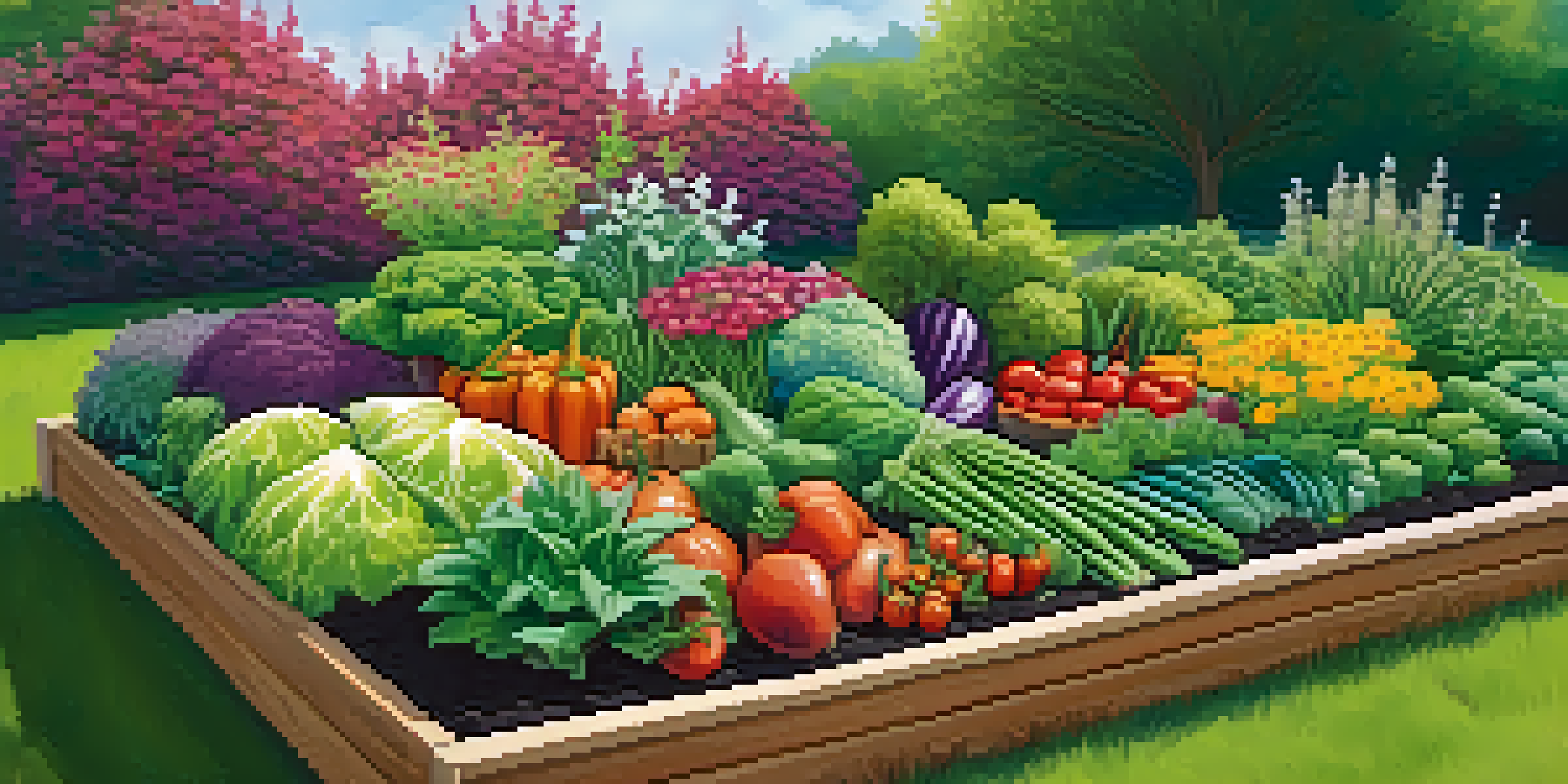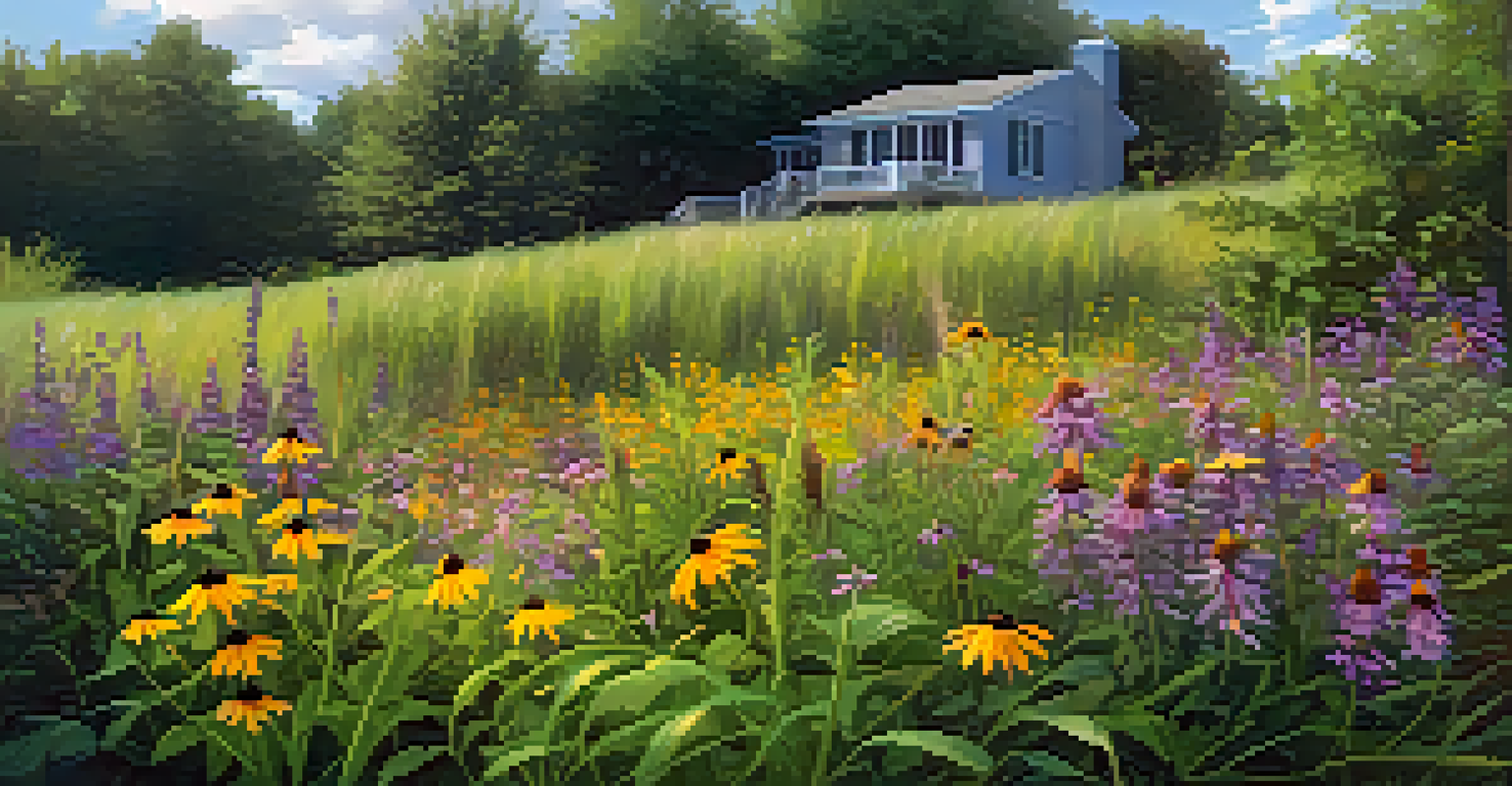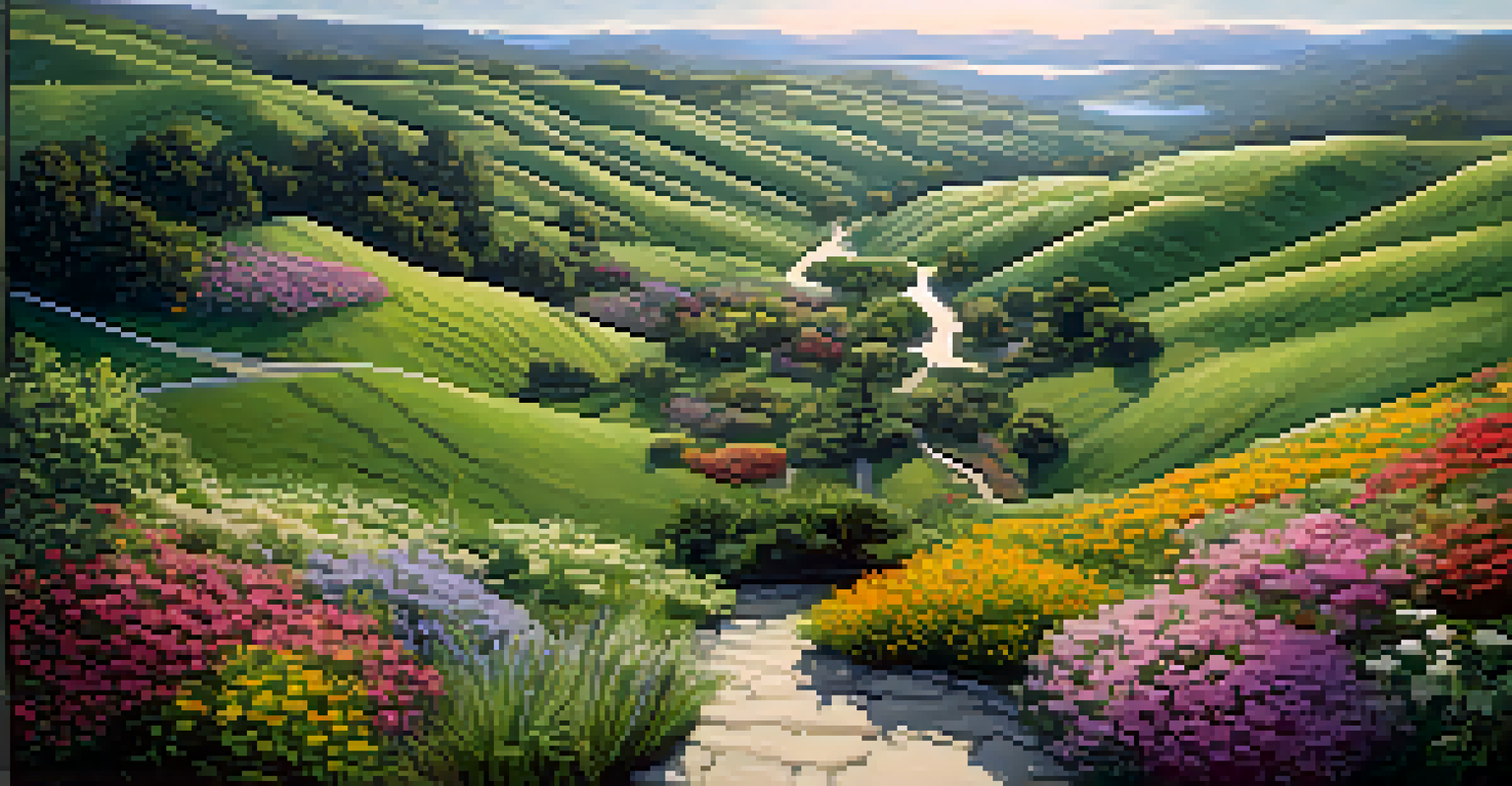Landscaping Ideas That Improve Drainage and Soil Health

Understanding the Importance of Drainage and Soil Health
Proper drainage and healthy soil are crucial for any thriving garden. When water pools in your yard, it can suffocate plant roots and create an environment for pests and diseases. Healthy soil, on the other hand, supports plant growth by providing essential nutrients and a balanced ecosystem.
Healthy soil is the foundation of a healthy garden.
Imagine your garden as a living community where every plant plays a role. If one section is hindered by poor drainage or unhealthy soil, the entire community suffers. By understanding these concepts, you can make informed landscaping choices that promote a flourishing environment.
Ultimately, investing in drainage and soil health not only benefits your plants but also enhances the overall aesthetics and functionality of your outdoor space. Let's explore some creative landscaping ideas designed to improve these vital components.
Incorporating Native Plants for Natural Drainage
One of the simplest ways to enhance drainage is by incorporating native plants into your landscape. These plants are adapted to local soil and climate conditions, requiring less water and maintenance while promoting healthy drainage. By planting them, you create a self-sustaining ecosystem that naturally manages water runoff.

For example, if you live in an area prone to heavy rainfall, consider plants like black-eyed Susans or purple coneflowers, which thrive in such conditions. Their deep roots help absorb excess water and improve soil structure, reducing erosion and runoff.
Drainage and Soil Health Matter
Proper drainage and healthy soil are essential for thriving gardens, supporting plant growth, and preventing issues like waterlogging and pest infestations.
By going native, not only do you support local wildlife, but you also create a resilient garden that can withstand the challenges of your climate. This approach harmonizes with nature, making your landscape both beautiful and functional.
Designing Rain Gardens for Effective Water Management
Rain gardens are a fantastic way to manage stormwater runoff and improve drainage. These gardens are designed to capture and absorb rainwater from roofs, driveways, and other impervious surfaces. By directing water into a rain garden, you allow it to soak into the soil rather than flooding your yard.
The best time to plant a tree was twenty years ago. The second best time is now.
Typically planted with native species, rain gardens can be both functional and attractive. Picture a vibrant patch of wildflowers and grasses that not only looks stunning but also helps filter pollutants from stormwater, promoting healthier soil and waterways.
Creating a rain garden is like giving nature a helping hand. It encourages biodiversity and creates a mini-ecosystem right in your backyard, transforming problem areas into beautiful, sustainable landscapes.
Utilizing Mulch for Moisture Retention and Soil Health
Mulching is a powerful technique that enhances both drainage and soil health. By applying a layer of organic material, like wood chips or straw, you can reduce evaporation, suppress weeds, and improve soil structure as it breaks down. This simple step can make a world of difference in maintaining moisture levels.
Consider applying mulch around your plants, especially in areas that tend to dry out quickly. It acts like a sponge, soaking up rainwater and slowly releasing it, which helps keep roots hydrated and happy throughout dry spells.
Native Plants Improve Drainage
Incorporating native plants into your landscape enhances natural drainage and creates a self-sustaining ecosystem that thrives with local climate conditions.
Additionally, as mulch decomposes, it enriches the soil with nutrients, creating a healthy environment for plant growth. This not only beautifies your landscape but also nurtures the very foundation of your garden.
Creating Contoured Landscapes for Better Water Flow
Contour landscaping involves shaping your yard to follow the natural contours of the land. This method is effective in managing water runoff and preventing erosion. By creating ridges and depressions, you can direct water flow to desired areas, ensuring it soaks into the ground rather than pooling.
Imagine a gently sloping garden where water flows naturally to designated spots, nurturing plants without the risk of drowning them. This technique can be especially helpful on slopes, where water tends to rush away quickly.
Not only does contouring improve drainage, but it also adds visual interest to your landscape. The undulating terrain creates dynamic spaces that can showcase a variety of plants and features, making your yard a feast for the eyes.
Incorporating Permeable Paving Solutions
Permeable paving is a sustainable landscaping option that allows rainwater to seep through surfaces like driveways and patios. Instead of creating impermeable barriers, these materials help manage water runoff effectively, encouraging it to filter back into the ground.
Think of permeable paving as a sponge for your outdoor spaces. It not only prevents flooding but also reduces the heat island effect common in urban areas, making your landscape more eco-friendly.
Raised Beds Boost Soil Quality
Building raised garden beds improves drainage, allows for better soil control, and promotes healthier plants by preventing waterlogging.
By choosing permeable options like gravel, porous concrete, or permeable pavers, you can enhance your outdoor aesthetic while promoting better drainage and soil health.
Building Raised Beds for Improved Soil Conditions
Raised garden beds are not just for aesthetics; they play a significant role in improving drainage and soil health. By elevating your plants, you create a well-draining environment that prevents waterlogging. This is especially beneficial in areas with heavy clay soils that retain moisture.
Picture a beautifully arranged bed filled with colorful vegetables and flowers, thriving in loose, nutrient-rich soil. The height of raised beds allows for better root development and makes gardening easier on your back, too!

Moreover, you can control soil quality more effectively in raised beds, using a mix of compost and organic matter to create the perfect growing conditions. This approach leads to healthier plants and bountiful harvests.
Regular Soil Testing for Informed Landscaping Decisions
Regular soil testing is a crucial step in maintaining the health of your garden. By understanding the nutrient composition and pH levels of your soil, you can make informed decisions about what amendments or plants to introduce. This proactive approach ensures that your landscape thrives over time.
Consider soil testing as a health check for your garden. Just like visiting a doctor for a check-up, testing helps identify potential issues before they escalate, allowing you to address them promptly.
With the right information at hand, you can optimize your landscaping efforts, leading to improved drainage, healthier soil, and a more vibrant garden overall. It's a small step that can yield significant benefits.